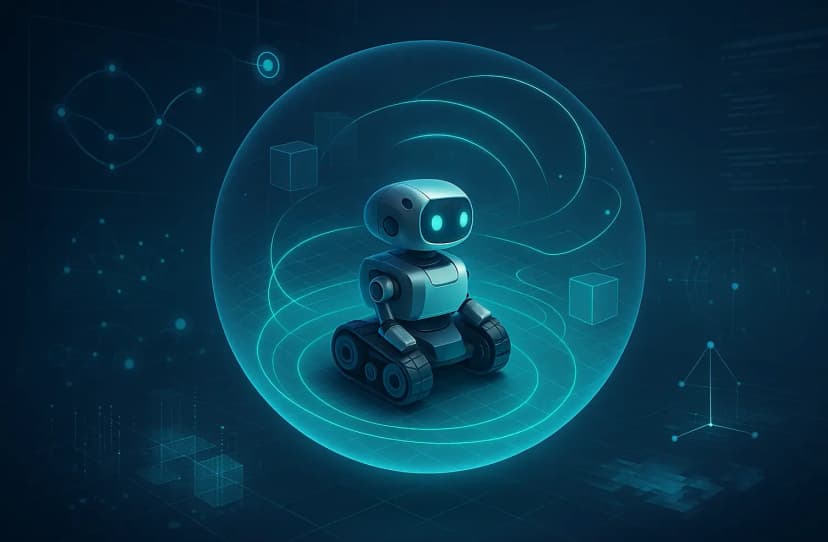How Can Optimized Checkout Testing Improve Customer Experience?
Beneath every robot’s physical frame lies a sophisticated web of software systems. These control everything from motion planning to sensor data fusion and real-time decision-making.
In robotics, software isn’t just code — it’s the brain. It must interact seamlessly with hardware, process sensor data instantly, and adapt to unpredictable environments. A minor software flaw can mean a navigation error, a safety risk, or a full system failure.
That’s why robotic software testing is a dedicated discipline within QA. It ensures that algorithms, controllers, and communication layers work reliably — whether in simulation or in real-world deployment.
Why Robotic Software Testing Is Different
Unlike testing web or mobile applications, robotic software testing deals with real-time constraints, hardware dependencies, and safety-critical execution.
A navigation stack may have to respond in milliseconds. Sensor readings must synchronize perfectly. A single miscalculated path could lead to collision or downtime.
Robotic software is:
- Time-sensitive — millisecond-level delays can break motion coordination
- Hardware-dependent — tightly linked to motors, sensors, and actuators
- Distributed — made up of multiple ROS nodes communicating over topics and services
- Safety-critical — failures can damage equipment or endanger humans
These factors make robotic software QA both more complex and more essential.
Core Testing Areas in Robotic Software QA
ROS2 Node Validation
Every ROS2 node must be tested for correct behavior, message handling, and state transitions. This involves unit tests with launch_testing and full communication validation across publishers and subscribers.
Motion Planning Verification
Planning pipelines like MoveIt2 must produce safe, collision-free, and optimized paths. Testing includes dynamic obstacle handling, trajectory smoothness, and precision endpoint execution.
Sensor Integration Testing
Sensors like lidar, cameras, IMUs, and ultrasonic devices must align timestamps, fuse data accurately, and handle noise gracefully. Simulating sensor loss or distortion ensures resilience.
Simulation-Based QA
Tools like Gazebo, Webots, or CoppeliaSim create realistic virtual environments for full-stack testing — ramps, doors, stairs, and moving people can be introduced before deploying on real hardware.
Control Logic and Safety Checks
PID or MPC controllers are tested for stability, precision, and emergency responsiveness. Safety validation ensures that braking, edge detection, and watchdog systems work in all scenarios.
Key Tools for Robotic Software Testing
| Tool / Framework | Purpose | Example Use |
| ROS2 + launch_testing | Unit and integration testing of ROS nodes | Validate message passing between nodes |
| Gazebo | Physics-based simulation | Test robot navigation in virtual factory |
| MoveIt2 | Motion planning and trajectory validation | Arm path optimization with dynamic obstacles |
| RQT tools | Real-time system inspection | Visualize topic messages and parameters |
| RViz | 3D visualization of robot models and sensors | Debug sensor alignment and transforms |
| GTest / Pytest-ROS | Automated C++/Python testing | Check navigation stack components |
| CI/CD with ROS Docker | Continuous integration for robotics | Run automated builds and Gazebo tests |
Real-World Example: Testing a ROS2 Delivery Robot
Imagine a warehouse robot that picks items from storage and delivers them to packing stations.
Testing approach:
- Unit testing: Verify object detection node identifies items with correct IDs
- Integration testing: Ensure perception, path planning, and motion control work together
- Simulation: Run hundreds of randomized delivery routes in Gazebo with variable obstacles
- Failure injection: Block paths, simulate sensor loss, and validate re-routing success
- Performance monitoring: Track CPU load, motion deviation, and latency under full payload
This ensures the robot operates efficiently before touching a real warehouse floor.
Metrics That Matter in Robotic Software QA
| Metric | Why It Matters | Example Target |
| Message latency (ms) | Ensures timely ROS2 communication | ≤ 50 ms |
| Motion deviation (cm) | Accuracy of following planned paths | ≤ 2 cm |
| Crash recovery time (s) | Speed of resuming operation after a fault | ≤ 5 s |
| CPU utilization (%) | System efficiency under load | ≤ 70% |
| SLAM map accuracy (%) | Quality of environment mapping | ≥ 95% |
| Sensor refresh consistency (Hz) | Stability of input readings | Within ±5% tolerance |
Simulation vs. Hardware Testing
Simulation reduces risk and cost, allowing rapid testing of edge cases like poor lighting, slippery floors, or moving obstacles. However, hardware testing captures issues simulations can’t — such as electromagnetic interference or mechanical wear.
The most effective QA blends simulation-first testing with targeted real-world trials.
Continuous QA with CI/CD for Robotics
Modern robotic QA integrates with CI/CD pipelines. Automated builds can run ROS2 tests in Docker containers, execute Gazebo simulations in headless mode, and generate performance reports — all before merging new code.
This approach ensures issues are caught early, reducing costly on-site failures.
Conclusion: Code That Drives Robots Deserves Rigorous QA
In robotics, software is the intelligence. If it fails, the entire system fails. Robust robotic software testing ensures every motion, decision, and interaction is reliable and safe.
At Testriq, we build QA pipelines that test ROS2 nodes, validate motion planning, and simulate hundreds of real-world conditions — ensuring your robot is market-ready and risk-free.
Testriq’s Robotic Software Testing Services
- ROS2 integration and node validation
- Gazebo-based simulation testing
- MoveIt2 motion planning QA
- CI/CD pipeline integration for continuous robotic QA
About Atul Ahire
Expert in Robotics Testing with years of experience in software testing and quality assurance.
Found this article helpful?
Share it with your team!
